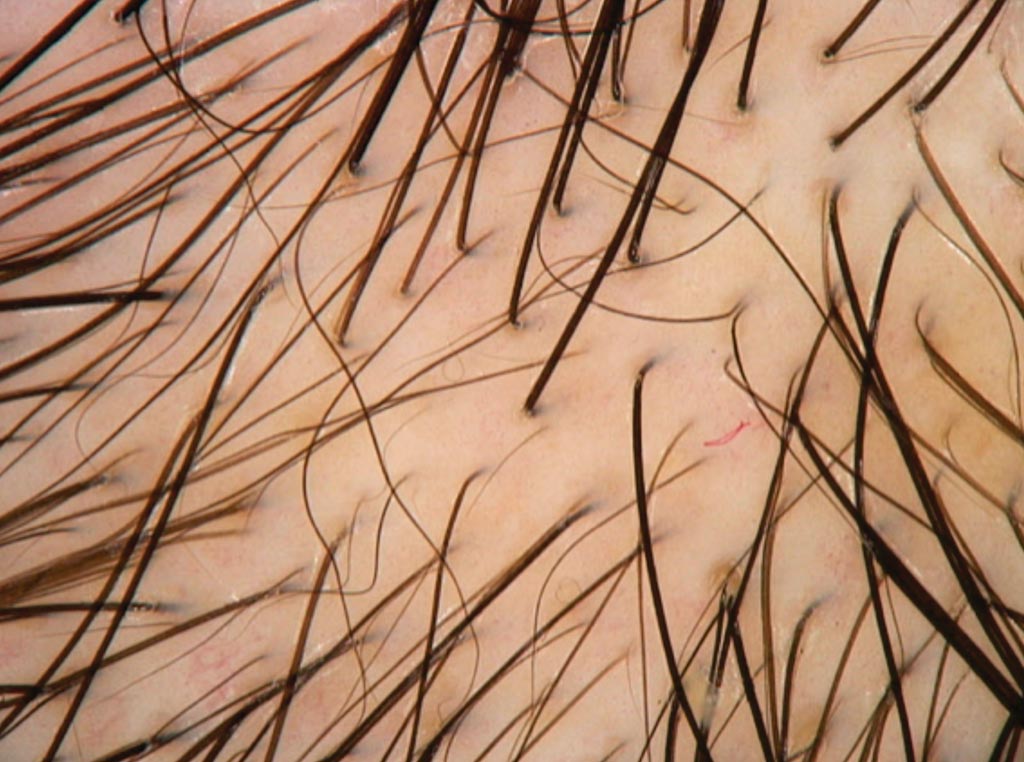Hair Analysis May Help Diagnose Cushing Syndrome
By LabMedica International staff writers
Posted on 23 Feb 2017
Cushing's syndrome is a condition that occurs as a result of exposure to high levels of cortisol for an extended period. The diagnosis of Cushing syndrome is often difficult and time-consuming, requiring 24 hours to analyze blood and urine tests, brain imaging tests, and tissue samples from sinuses at the base of the skull.Posted on 23 Feb 2017
Excessive cortisol levels can also be caused when a tumor develops inside one of the body's glands, such as the pituitary or adrenal glands, although this is less common. The adrenal glands produce cortisol. Elevated cortisol levels can be triggered as a side effect of corticosteroid medications that are used to treat inflammatory diseases, such as lupus, asthma, and rheumatoid arthritis.

Image: Research shows analyzing cortisol levels in hair close to the scalp may be a reliable diagnostic method for Cushing\'s syndrome (Photo courtesy of Professor Antonella Tosti, MD).
Scientists associated with the US National Institute of Child Health and Human Development enrolled 30 patients (26.5 ± 18.9 years, 75% female, and 75% Caucasian) with Cushing Syndrome and six patients who did not have the condition. The number of patients in the study was small, compared to studies of patients with more common disorders, because Cushing Syndrome is rare and it is difficult to recruit a large number of patients. The study participants provided hair samples divided into three equal segments.
The team analyzed diurnal serum cortisol, 24 hour urinary free cortisol corrected for body surface area (UFC/BSA), and 24 hour urinary 17-hydroxysteroids corrected for creatinine (17OHS/Cr). The investigators took 3-cm hair samples nearest to the scalp, cut into 1-cm segments (proximal, medial, and distal), which were analyzed for cortisol by enzyme immunoassay and measured as pmol cortisol/g dry hair. Hair cortisol levels were compared with laboratory testing done within previous two months of the evaluation.
The scientists reported that proximal hair cortisol was higher in Cushing syndrome patients (266.6 ± 738.4 pmol/g) than control patients (38.9 ± 25.3 pmol/g). Proximal hair cortisol was highest of all segments in 25/36 (69%) patients. Among all subjects, proximal hair cortisol was strongly correlated with UFC/BSA midnight serum cortisol and 17OHS/Cr, which trended towards significance. Hair cortisol levels closely correlated with cortisol levels in urine, blood.
The authors concluded that among the three examined hair segments; proximal hair contained the highest cortisol levels and correlated the most with the initial biochemical tests for Cushing syndrome in their study. Further studies are needed to validate proximal hair cortisol in the diagnostic workup for Cushing syndrome. Mihail Zilbermint, MD, an endocrinologist and senior author of the study said, “Our results are encouraging. We are hopeful that hair analysis may ultimately prove useful as a less invasive screening test for Cushing's syndrome or in helping to confirm the diagnosis.” The study was published on February 13, 2017, in the journal Endocrine.














